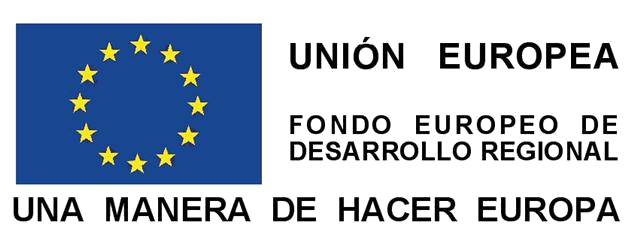Type: Station
Operational period: November–March
Location
Seasonal coastal Antarctic station located 200 m from shore in a small bay in Livingston Island, South Shetland Islands. The station is close to Johnson Glacier and Sofia Mountain.
Biodiversity and natural environment
Coastal area surrounded by glaciers. Around the station there are many different lichen species and some fauna including Gentoo and Chinstrap penguins, Elephant seals, and birds such as Skuas and Petrels. Permafrost is easy to find in the area. The criptogamic prairies are remarkable. Vascular plants are present in the station vicinity.
History and facilities
The station was set up to support the interest shown by the Spanish scientific community in Antarctica, it was the first Spanish station in Antarctica. In December 1986, a group of four scientists set up a camp in Livingston Island in order to look for the right place to build the Juan Carlos I station, taking into account that, at that time, there were no stations in Livingston Island. In 1988 the first modules of the station were disembarked, in that moment, the Juan Carlos I station was installed. Since then, the station has been operative during 28 years. The station was recently refurbished and was completed in the 2016/2017 campaign. The station consists of a set of buildings with two main modules, living/services, including infirmary, kitchen rooms and living room, with capacity for fifty people, and a laboratory module able to cover different scientific disciplines. There are another six modules dedicated to station services:workshop, waste treatment, energy generation, storage, fuel. One important aspect of the station is the importance given to energy efficiency in order to avoid energy waste and focus on decreasing consumption.
CLIMATE
Climate zone Maritime Antarctica
Permafrost Sporadic
Mean annual wind speed (km/h) 14
Max wind speed (km/h) 180
Dominant wind direction
Sea Ice Break Up
Snow free period February
Total annual precipitation (mm)
Precipitation type Snow and Rain
Mean annual temperature (°C) -1.2
Mean temperature in February (°C) 2.2
Mean temperature in July (°C) -5.1
ENVIRONMENT
Region Antarctic Peninsula
Antarctic Environmental Domain: G – Antarctic Peninsula offshore island geologic
Antarctic Conservation Biogeographic Region: 3 North-west Antarctic Peninsula
Altitude of facility (m) 12
Type of surface facility built on Ice-free ground
Long term monitoring Yes
Waste management Yes
Hazard(ous) management Yes
Fuel spill response capability Yes
General research and databases
Glaciology, lichen physiology, permafrost, geomagnetism, ionosphere, and meteorology databases are available. Research on limnology, microbiology, coastal science, soils, geology, geomorphology, geodesy are also conducted.
Features in the facility area
Bird colonies, Clear air zone, Coast, Hill, Ice cap or glacier, Lake, Melt streams, Moraine, Mountain, Other Biological, Permanent snowpatches, Rock, Shoreline, Snow.
Main science disciplines
Atmospheric chemistry and physics, Climate change, Climatology, Ecology, Environmental sciences, Geocryology, Geodesy, Geology, Geomorphology, Geophysics, GIS, Glaciology, Human impact, Hydrology, Limnology, Marine biology, Microbiology, Oceanography, Pollution, Soil science, Terrestrial biology.
FACILITIES INFRASTRUCTURE
Area under roof (m2) 1735
Area scientific laboratories (m2) 220
Type of scientific laboratories: Biology, Chemistry, Electronic, Geology,
Geophysics
Conference room (capacity) 25
Logistic area (m2) 1215
Number of beds 50
Showers Yes
Laundry facilities Yes
Power supply type Fossil fuel,
Renewable
Power supply (V) 220
Power supply (hours per day) 24
Number of staff on station (peak/summer season) 16
Number of scientists on station (peak/summer season) 11
Max number of personnel at a time (staff, scientists and others): 50
Specific device/Scientific equipment: Microscopes, balance, basic lab glass
items, fume hood, centrifuge, refrigerators, pumps, pH meter. Scientific services
possible: Biological, chemical and electronic laboratories.
Long-term monitoring/observations: Geodesy, glaciology, hydrology, meteorology
MEDICAL FACILITIES
Area of medical facility (m2) 10
Staff with basic medical training or doctor (Summer) 1
Capability: Equipment: Aeromedical equipment, Anaesthesia, Biochemistry,
Haematology, Mountain medicine related equipment
Distance to hospital (km) 990
Closest emergency facility in Antarctica (km) 100
Closest emergency facility external (km) 100
Medical screening requirements Yes
VEHICLES AT FACILITY
Sea transportation: Four Zodiac rubber boats
Land transportation: Three telehandlers, one tracked utility machine, two quad bikes, five snowmobiles
WORKSHOP FACILITIES
ICTS, Mechanical, Metal workshop, Wood workshop
COMMUNICATIONS
E-mail, Printer, Satellite phone, Scanner, Telephone, VHF
Vsat with 256 kb/s(CIR),512 kb/s(MIR) of bandwidth
TRANSPORT AND FREIGHT
Access Sea
Transport to facility: Helicopter, Ship
Number of flight visits per year 1
Period of flight visits per year: January, February
Helipad
Number of ship visits per year 4
Period of ship visits per year: January, February, November, December











